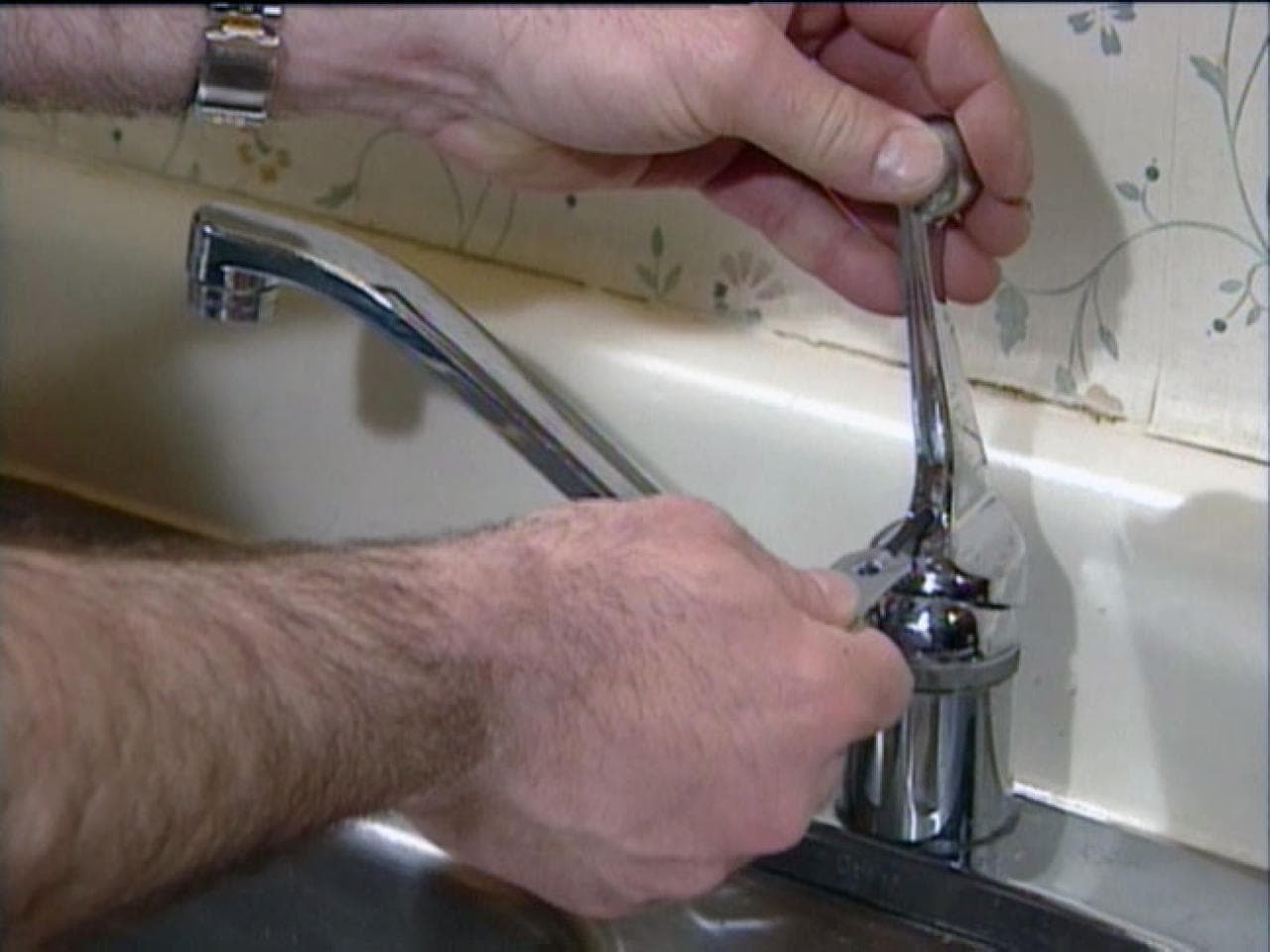Uncovering the Importance of Correcting a Broken Faucet
Uncovering the Importance of Correcting a Broken Faucet
Blog Article
Here in the next paragraphs you can locate a lot of quality answers regarding Water Dripping from Faucet: Why and How to Fix.

Trickling faucets might look like a minor inconvenience, but their impact surpasses simply the aggravation of the audio. From wasting water to incurring unnecessary financial costs and wellness dangers, disregarding a dripping tap can cause different consequences. In this post, we'll explore why it's crucial to address this typical household issue immediately and efficiently.
Wastefulness of Water
Environmental Influence
Dripping faucets add substantially to water wastage. According to the Environmental Protection Agency (EPA), a solitary faucet leaking at one drip per secondly can waste more than 3,000 gallons of water annually. This not only stress water resources yet likewise impacts ecosystems and wild animals depending on them.
Financial Expenses
Raised Water Expenses
Beyond the ecological effect, leaking taps can pump up water expenses substantially. The accumulated wastefulness with time converts right into greater energy expenses, which could have been avoided with timely repairs.
Possible Home Damage
Moreover, long term leaking can result in harm to components and surfaces bordering the tap. Water accumulation can create staining, corrosion, and also architectural problems if left unattended, leading to additional repair service prices.
Health Problems
Mold and Mildew Development
The constant existence of dampness from a dripping tap develops an optimal setting for mold and mildew and mold growth. These fungi not just endanger interior air quality but likewise present wellness threats, specifically for people with breathing problems or allergic reactions.
Waterborne Illness
Stationary water in leaking faucets can end up being a breeding place for microorganisms and other virus, raising the threat of waterborne diseases. Pollutants such as Legionella microorganisms prosper in stationary water, possibly causing major health problems when consumed or inhaled.
DIY vs. Specialist Fixing
Benefits and drawbacks of DIY Repair
While some might attempt to deal with a leaking tap themselves, DIY fixings come with their very own set of difficulties. Without proper understanding and devices, DIY attempts can aggravate the issue or cause insufficient repair work, extending the trouble.
Benefits of Employing a Specialist Plumber
Working with a professional plumber guarantees that the underlying root cause of the trickling tap is resolved effectively. Plumbings possess the know-how and devices to identify and repair faucet issues successfully, conserving time and lessening the danger of additional damage.
Step-by-Step Overview to Dealing With a Dripping Tap
Tools Needed
Prior to attempting to fix a trickling faucet, gather the essential tools, consisting of a flexible wrench, screwdrivers, replacement components (such as washers or cartridges), and plumber's tape.
Usual Tap Issues and Their Solutions
Determine the type of tap and the specific problem causing the drip. Typical troubles include damaged washers, corroded valve seats, or defective O-rings. Describe producer guidelines or on the internet tutorials for detailed guidance on repairs.
Safety nets
Routine Maintenance Tips
To stop dripping faucets, do regular upkeep such as cleansing aerators, examining for leaks, and replacing worn-out components immediately. In addition, take into consideration mounting water-saving tools or updating to extra reliable fixtures.
Significance of Prompt Repair Works
Dealing with dripping faucets as quickly as they're observed stops additional water wastage and possible damages, ultimately conserving both water and money in the future.
Effect On Residential Property Worth
Understanding of Well-Maintained Residential Or Commercial Property
Preserving a residential or commercial property in good condition, including attending to upkeep concerns like trickling taps, improves its viewed value and value among potential buyers or renters.
Influence on Resale Value
Characteristics with well-maintained plumbing fixtures, consisting of taps, command higher resale values in the realty market. Dealing with dripping taps can add to a positive impact throughout home evaluations and arrangements.
Ecological Responsibility
Specific Contribution to Preservation
Taking duty for repairing trickling faucets straightens with broader initiatives towards water conservation and environmental sustainability. Every person's actions jointly make a significant influence on protecting priceless sources.
Lasting Living Practices
By prioritizing prompt repair services and taking on water-saving routines, individuals add to sustainable living techniques that benefit both existing and future generations.
Conclusion
Resolving a leaking tap exceeds mere convenience; it's an essential step towards conserving water, minimizing economic costs, and securing health and residential property. Whether via do it yourself repairs or professional support, acting to take care of leaking faucets is a little yet impactful method to promote responsible stewardship of resources and contribute to a healthier, more sustainable future.
How to Fix a Dripping or Leaky Faucet
A leaking faucet is one of the most common problems that homeowners encounter, but it being commonplace doesn’t make it any less annoying. The constant drip drip drip of a leaking bathtub faucet, showerhead, or sink tap can disturb your home’s serenity. Left neglected, a dripping faucet can also result in higher water bills and discoloration or mold growth in your sink or plumbing fixtures.
Fortunately, you don’t have to be a trained plumber to know how to stop a dripping faucet. With some basic tools, replacement parts, and a little patience, leaky faucet repair is a breeze. In this article, we’ll explain what causes dripping faucets and how you can fix them.
What Causes a Leaking Faucet?
Kitchen and bathroom faucets come in all manner of designs, but most involve some combination of valves, O-rings, seals, and washers. The O-ring is usually the weakest link, but any one of these pieces can wear down over time. Heat, moisture, temperature fluctuations, minerals, mold, and movement can contribute to warping and corrosion, breaking the watertight seal. This just comes with the territory of being a homeowner. Everything is always subject to wear and tear, and some component parts of your appliances and fixtures need to be replaced on occasion. At least replacement O-rings are cheap!
More rarely, dripping faucets can be a symptom of excessively high water pressure. Were this the case in your home, you would probably notice that the leak is not isolated to one faucet. Water pressure issues are harder to resolve on your own. We recommend contacting a professional plumber if you suspect your water pressure is too high.
How to Fix a Dripping Faucet
Pipe wrench or monkey wrench Allen wrench set Screwdrivers Old towel or rag Shut off the water.
Before you do anything, you need to turn off the water to keep from drenching your kitchen or bathroom. You should find a valve under the sink and against the wall. Once you’ve turned this valve, try turning the faucet on to confirm that the water source has been cut off.
If you can’t locate your local valve for the faucet you’re working on, you can always shut off the water to the house at the main valve. Of course, this will prohibit anyone from using the sinks, showers, or toilets while you’re working on the faucet that’s giving you trouble.
Plug or block the drain.
You’ll be disassembling the faucet and removing some small bits of hardware. Plug the drain with a stopper or rag to avoid the possibility of a small screw falling into your P-trap.
Take apart the faucet assembly.
There are several varieties of kitchen and bathroom faucets, each with its own manner of assembly. For detailed instructions on how to disassemble your faucet, you can refer to the fixture’s manual or contact the manufacturer. If you know whether you have a ball, disc, cartridge, or compression faucet, you can find detailed schematics online.
In general, you need to begin by removing the faucet handles. You might notice a small screw that you’ll need to remove with a screwdriver or Allen wrench. If you don’t see any visible securing hardware, it’s likely hidden under a decorative cap that can be unscrewed or popped off with flathead screwdriver.
Remove each piece methodically, consulting a schematic when necessary. Take notes or arrange the pieces in such a way to make it easier to correctly reassemble the faucet later.
Remove the cartridge.
Once you’ve removed the handles and securing hardware, you should be able to remove the valve cartridge or stem. Some cartridges will slide right out. Other faucet models will require you to loosen a nut with a pipe wrench before you can remove the valve stem.
Examine the exposed hardware.
With the cartridge or stem removed, inspect the component parts. Check the rubber O-rings for wear and tear. Also examine the seat washer for corrosion or other damage. These pieces are usually the responsible parties for a dripping faucet, but it’s worth inspecting the other component parts while you have the faucet disassembled.
Find replacement parts.
Once you’ve identified which faucet component has failed, find an identical replacement. Your local hardware store should have O-rings, seat washers, and other standard components in stock. If you have a luxury or uncommon faucet, you may have to contact the manufacturer for a replacement part.
It’s a good idea to take your old parts with you to the hardware store so you can compare them with the store’s inventory and be sure you’re purchasing the correct replacement.
Reassemble the faucet.
With your new parts in hand, reconstruct the faucet and handles. Don’t be tempted to overtighten screws or nuts. You might think this could create a better seal, but it can instead damage or bend a delicate part of the assembly and create a new problem for you.
Turn on the water and test the faucet.
The only thing left to do is test your work. Unplug the sink, turn the water back on, and try the faucet. Congratulate yourself on a job well done!
https://www.libertyhomeguard.com/how-to-fix-a-dripping-or-leaky-faucet/

I was shown that report about Why Is It Important To Fix Your Leaking Tap/Faucet? from a good friend on our other web property. You should pause to share this entry if you enjoyed it. Thanks so much for going through it.
Report this page